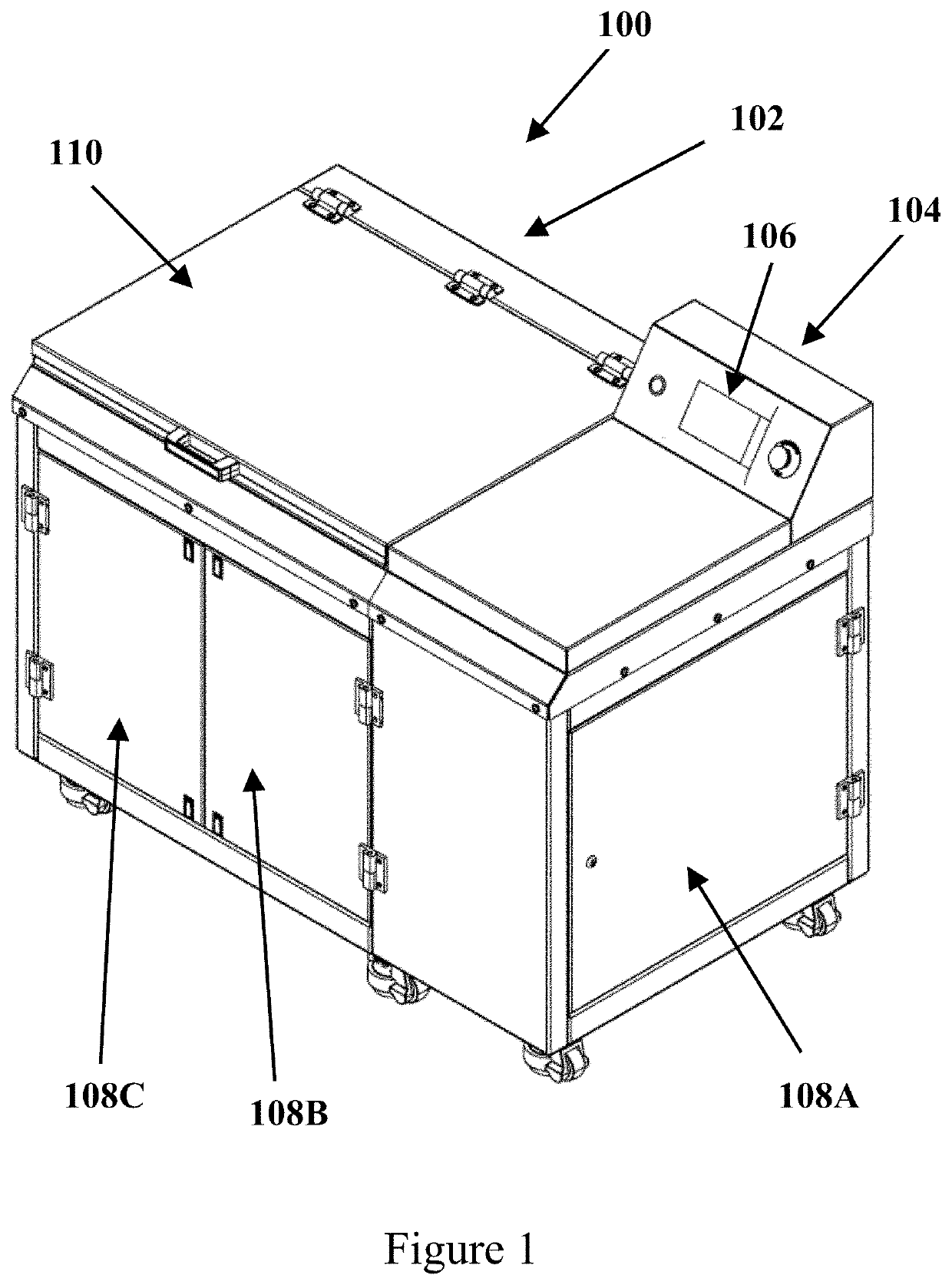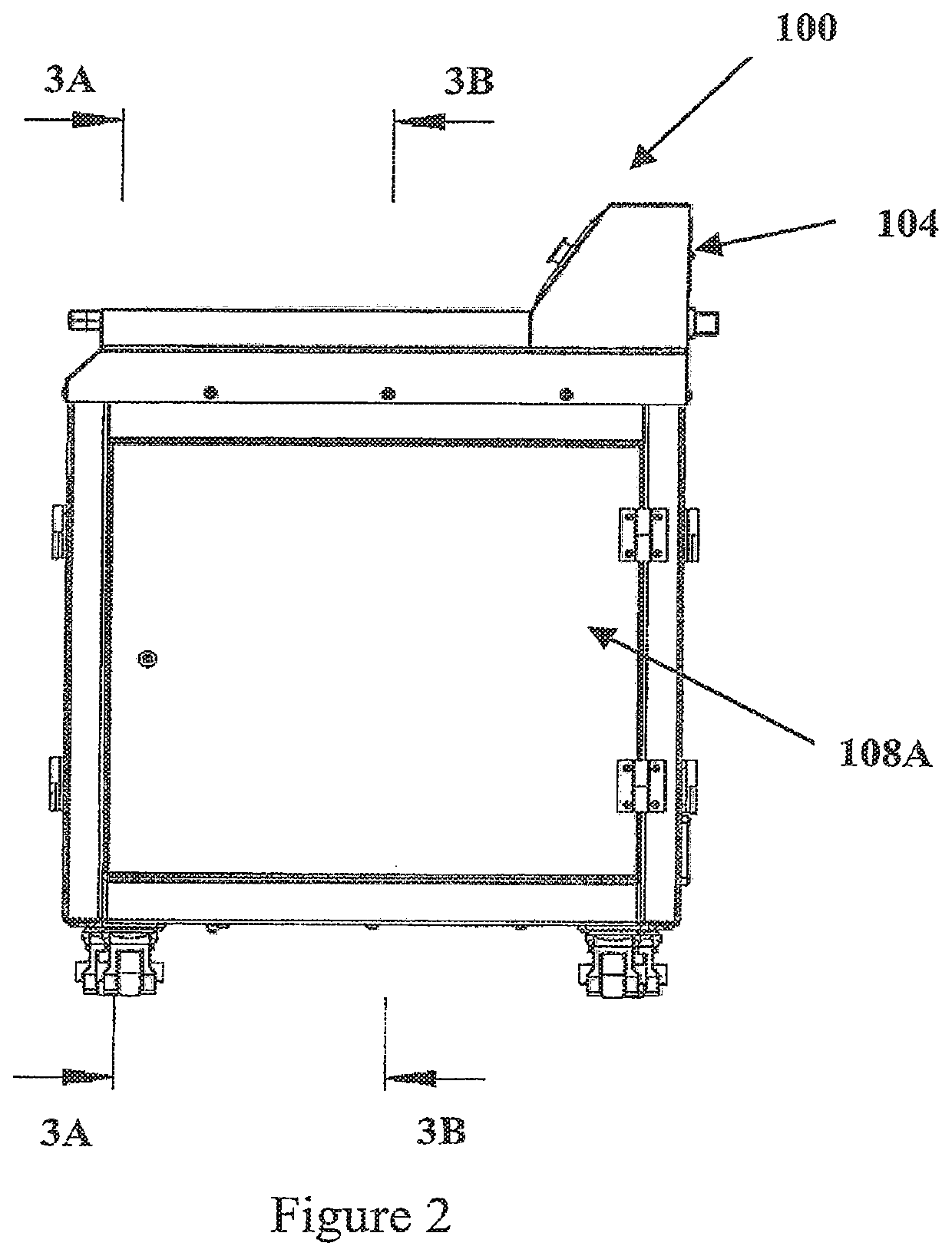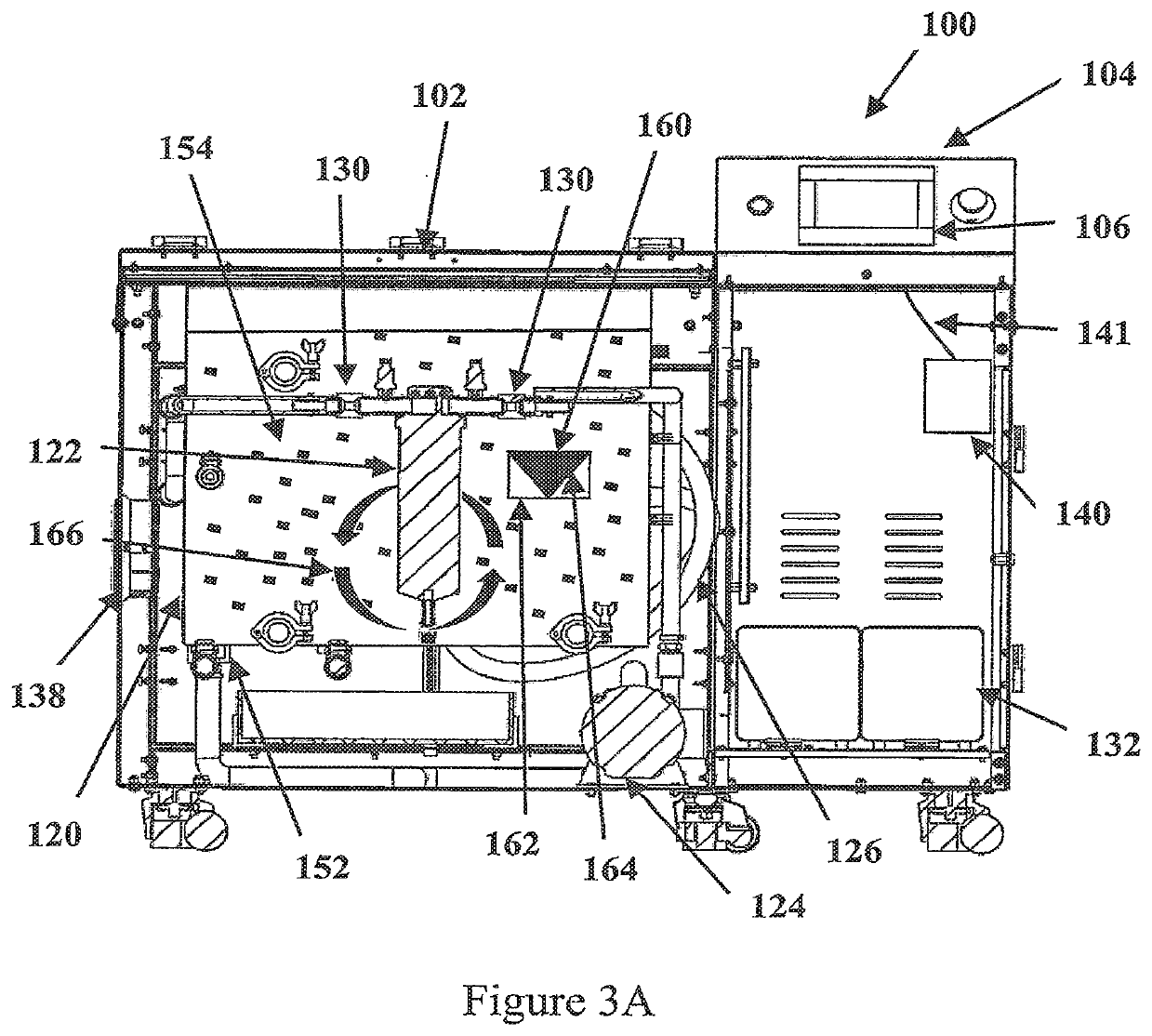Self-Modifying Apparatus For Rotational Support Structure Removal In 3D Printed Parts Using Calibrated Resonant Frequency
a self-modifying, 3d printed, support material technology, applied in the direction of chemistry apparatus and processes, cleaning using liquids, manufacturing tools, etc., can solve the problems of pre-mature failure, rough outer surface, and inability to remove support materials at a significant amount, so as to avoid or reduce bottlenecks
- Summary
- Abstract
- Description
- Claims
- Application Information
AI Technical Summary
Benefits of technology
Problems solved by technology
Method used
Image
Examples
first embodiment
[0083]FIG. 4 is a flowchart describing optimization of a support material removal method according to the invention. Step 200 includes placing AMPHSM 160, 162 within chamber 120, and the chamber 120 has media 154 arranged within. Step 202 includes inputting a first density, geometry, material, and / or porosity of support material 162 into control unit 140. Step 204 includes measuring a set of parameters of media 154, which may include measuring temperature (via sensor 152), pH, fluid flow, agitation level, and / or pressure (via sensor 130). Step 206 includes activating pump 124 to create media vortex 166 within chamber 120. Step 208 includes agitating media 154 and AMPHSM 160, 162, which are in media 154, at a first agitation level via ultrasonic transducer 142. Step 210 incudes measuring an amplitude at which part 160 and support material 162 vibrate as a result of the first agitation level. Step 210 may be executed with the assistance of ultrasonic frequency feedback sensor (UFFS) 1...
second embodiment
[0084]FIG. 5 is a flowchart describing optimization of the support material removal method according to the invention. Step 200 includes placing the AMPHSM 160, 162 within chamber 120, and the chamber 120 has media 154 arranged within. Step 250 includes generating a run time value (“RTV”) for a duration of media vortex 166, which is generated by pump 124 circulating media 154. Step 252 includes entering the density, geometry, material, or porosity of part 160, support material 162, or both to determine an initial frequency value. The initial frequency value may be determined from a density, geometry, material, or porosity of part 160, support material 162, or both. The initial frequency value may be determined by analyzing the above parameters of the part to determine specific properties of support material 162, such as wall thickness and density, to better settle on an initial frequency value. For example, if support material 162 is solid, the initial frequency value might be set a...
PUM
 Login to View More
Login to View More Abstract
Description
Claims
Application Information
 Login to View More
Login to View More - R&D
- Intellectual Property
- Life Sciences
- Materials
- Tech Scout
- Unparalleled Data Quality
- Higher Quality Content
- 60% Fewer Hallucinations
Browse by: Latest US Patents, China's latest patents, Technical Efficacy Thesaurus, Application Domain, Technology Topic, Popular Technical Reports.
© 2025 PatSnap. All rights reserved.Legal|Privacy policy|Modern Slavery Act Transparency Statement|Sitemap|About US| Contact US: help@patsnap.com



